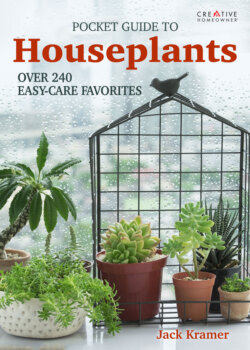Читать книгу Stitching Pathways - Jack Kramer - Страница 25
На сайте Литреса книга снята с продажи.
Troubleshooting
ОглавлениеMake sure your plants receive the right amount of light, moisture, humidity, and fertilizer, and that the indoor temperatures are suitable for each plant, and your plants will most likely be fine. But when problems do come up, use this troubleshooting guide to diagnose and treat your houseplants. Plants showing physical problems may need soil with better drainage, a different watering schedule, increased humidity, or just more fresh air. When there are multiple possible causes, change just one condition at a time to isolate the problem. Generally speaking, ongoing inspection and good growing conditions will help you prevent a few insects from becoming a major pest problem.
Soak new plants in water to bring insects to the surface.
Spotted leaves suggest various potential problems: heat too high, humidity too low, not enough fresh air, or soil too dry or too wet. Change the conditions one at a time to be sure of the cause.
Insufficient light caused this plant to reach awkwardly toward the sun and grow leggy stems with sparse leaves.
Lack of water and humidity or excessive heat, or both, have caused this plant to wilt.
Swab tobacco tea on leaves to get rid of scale or mealybugs.
Sticky traps are used to catch flying insects, such as whitefly, that have attacked houseplants.
This plant is not diseased. Insufficient water or too much fertilizer has burned it. Cut off the damaged leaves, water the plant thoroughly, and mist.
